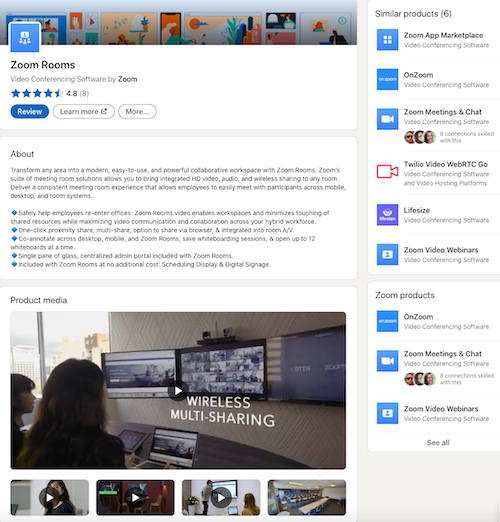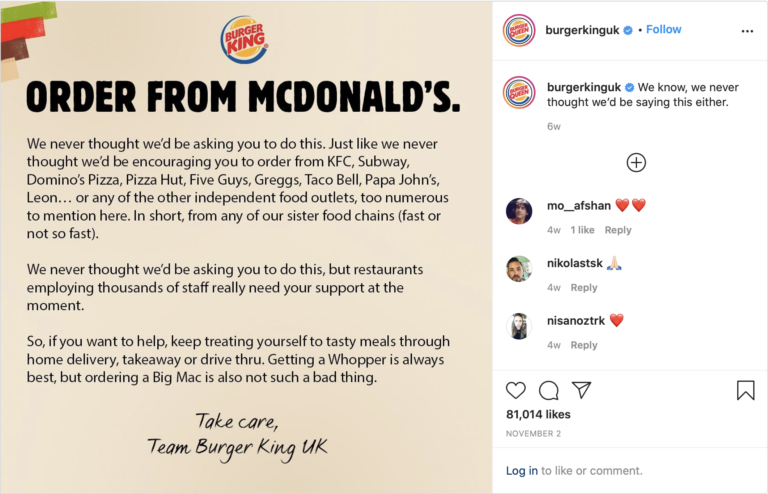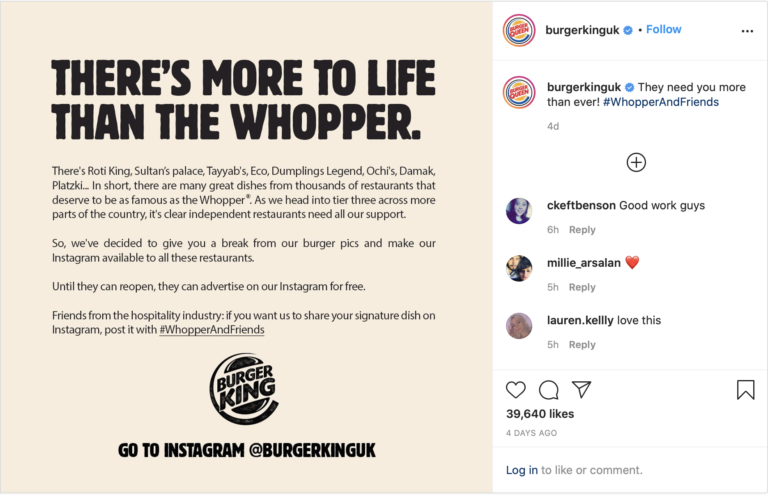In this week’s installment of “This Week in CX,” we list the biggest business, tech and data developments that occurred this past week and will most certainly impact how we design and deliver the customer experiences of tomorrow.
Volvo unmasks car consumers’ new wish list
Auto-brakes are so 2019.
Volvo partnered with The Harris Poll to figure out what drivers really want from their cars in a post-pandemic world and discovered that the definition of their brand core value – safety – has taken on new meaning.
After navigating a year of viral fear and uncertainty, consumers are re-evaluating how they interact with the outside world and are finding more creative ways to have experiences from the safety of their cars. They’re attending drive-in movies, zoomin’ through zoos, going for scenic drives, throwing drive-by celebrations and enjoying some quiet time by designating vehicles their “alone zones”. Cars are no long just a means of transportation – they’ve become a place for peace and connection during COVID.
And as the world settles into the new normal of being more homebound and socializing from a distance, this trend won’t stop. As public transportation and ride sharing services take a hit, people will continue to explore the outside world from the protection of their cars. It’s this change that is also driving new demands for built-in safety features.
According to Volvo’s Safety First: The Evolution of Driving and Mobility in 2020 report, air conditioners with germ filtering technology is the number one wish on many driver’s lists, followed by car sanitation services as part of standard packages, contactless service/maintenance offerings, built-in sanitizer dispensers and a place to store masks.
Also read: What’s In Store For the Future of Retail in a Post-COVID World?
“Given all that we’ve experienced this past year, the uncertainty and the safety risks, people just don’t feel safe,” says our Head of Strategy and Innovation Jesus Ramirez. “We’re all in constant fight or flight mode. People are looking around for any way to feel safe and for any semblance of security. Brands and businesses have an opportunity to account for these concerns in their products and services. Whether it’s restaurants and the precautions they’re taking to keep patrons safe, to product packaging, to airline procedures, to auto manufacturers.”
"We’re all in constant fight or flight mode. People are looking around for any way to feel safe and for any semblance of security."
Are you asking yourself how your business can increase safety and trust felt by customers? You should be. And, by the way, we can help.
LinkedIn gives users a new way to spend money
LinkedIn is no longer just a platform where users can socialize, search, stalk, and scroll; now it’s transforming its experience from passive to active by rolling out a digital storefront.
By allowing companies to build Product Pages into their profiles, LinkedIn is helping brands cultivate conversations and connections with customers and followers. These Product Pages will educate users about a company’s solutions, generate new qualified leads, and ultimately contribute to overall growth. Even better, Rishi Jobanputra, the Senior Director of Product Management at LinkedIn, said the pages will help brands build “a network of people who can become advocates of products.” Marketers will be able to gather ratings and reviews, highlight product endorsements and testimonials, and drive new and existing consumers to request demos or schedule meetings with the sales team via a call-to-action button.

“While Account Based Marketing has garnered Linkedin a lot of buzz in the performance marketing space lately, I believe their latest announcement of the launch of Product pages will move Linkedin from a trendy tactic to a must have strategy for every B2B marketing plan,” predicts Tallwave Senior Strategist Brian Hambrick. “Product Pages and the in-the-works Services Pages moves Linkedin from a top- and mid-funnel media channel to a full-funnel media channel where marketers can even close the sale within the platform.”
Brian suspects that most brands will want to use the Product Pages to drive customers to their existing websites, but with an audience of 722 Million business professionals who trust the platform, thinks the customer value of that strategy will be challenged.
“B2B brands will need to figure out how Linkedin can play a role in their customer journey and how these Product Pages – and the actions brands can generate from them – will fit into their larger CX strategy. Either way, Linkedin is quickly becoming one of the most important media channels for B2B marketers.”
Hey, it’s our favorite social media platform, so we’re here for it all.
Burger King UK promotes tacos, pasta and other stuff
No, they’re not expanding their menu, they’re just extending a helping hand.
Back in November, Burger King UK told their 350,000 followers to eat at McDonalds as a way to encourage people to support fast food chain restaurants during the pandemic and shelter-in orders.


“As we head into tier three across more parts of the country, it’s clear independent restaurants need all our support,” Burger King UK said in their social media post. “So we’ve decided to give you a break from our burger pics and make our Instagram available to all restaurants. Until they reopen, they can advertise on our Instagram for free.”
Pretty damn cool, in fact, our Associate Creative Director Albert Barroso said it was one of the coolest things he’s seen from a big brand in a while. By simply tagging Instagram food photos with #WhopperAndFriends, smaller businesses can have their signature dishes shared with burger lovers everywhere.
Albert wasn’t the only Tallwaver giving Burger King kudos for this do-good campaign. Paid Media Coordinator Lauren Franklin also called it a whopper (see what I did there?).
“It’s no secret that the restaurant industry is hurting. Burger King using their platform to help their competitors says a lot about them as a company,” she explains. “A lot of companies wouldn’t be comfortable with openly promoting their competitors but by doing just that – elevating their competitors in such a public way – they have, in turn, elevated their own platform.”
Also read: How a Powerful Brand Works as Insurance
So, basically, by telling fans to eat somewhere else, Burger King indirectly increased their own customer advocacy and support. They reflected their values in their actions and gave their customers those warm, fuzzy feelings that drive long-term retention and loyalty. And this, folks, is why they wear the crown… well, when they’re not loaning it out.
They reflected their values in their actions and gave their customers those warm, fuzzy feelings that drive long-term retention and loyalty.
AR, AI and Voice continue to take over the world
Are you ready for the future? Because, if you didn’t notice, it’s here.
AllWork.Space released its marketing trend prediction for 2021 and it’s all about voice search. Based around SEMrush’s forecast that more than half of all households (55%) will own smart speakers by 2022, AllWork.Space says voice search will evolve from a nice-to-have to an absolute must-have marketing strategy in 2021.
When pinged about the prediction, Tallwave’s Senior Product Designer Austin Baker wanted to share his own thoughts and projections on technologies that will force companies to raise their standards and re-envision their experiences in a post-pandemic and more distanced world.
First up: Austin says XR – short for extended reality, XR encompasses all augmented, virtual and mixed reality technologies – is finally becoming mainstream.
“It’s something that’s been played with for the past decade, but is just starting to work smoothly and easily. From virtually trying clothes on to seeing how furniture would look in your home or sitting down for a telehealth appointment with your doctor, XR will definitely start driving and pushing brands to create new 360-degree customer experiences.”
“On that same note,” Austin says, “I think VR paired with AR will start to become more available. Many schools and companies will continue to work from home and the challenges associated with remote working and learning won’t go away. I suspect, because of this, we’ll see some AR/VR technology that was shuffled onto the back-burner resurrected. Even better, in 2021, I bet we’ll see the first good iterations of VR meeting rooms – they’ll be closer to photo realism and much less cumbersome.”
And, as AllWork.Space reported, we can’t overlook voice search. While Austin says voice technology continues to improve (“Alexa works great, Google works great, Siri is… OK….”), the real problem is with the user experience.
“Alexa is integrated into every room of so many homes. It operates the lights. It turns on the TV. But when things go wrong – it plays on the wrong speaker or plays an explicit hip-hop song instead of Hamilton – frustration ensues and everyone starts yelling at the in-home robot. It’ll get there,” Austin says, “but the challenge has more to do here with how we expect the interaction to occur. Privacy and proper AI integration are going to be the greatest driving factors for experience. We can’t have devices listening for context without trusting that our privacy is protected for, as well.”
"The challenge has more to do here with how we expect the interaction to occur."
Overall, Austin wants to see all of the technologies come together to work synergistically towards making products – and experiences – more seamless and accessible for everyone.
“For example, they can be better utilized for people with disabilities. AR/VR technologies can be used for voice or eye tracking. That’s going to be something that companies that are committed to inclusivity and creating change start to explore. That will be really exciting and is much needed.”
Also read: Solving For the Lack of Diversity in CX
What a note to end on. We can’t wait to help Austin’s predictions come true by creating exceptional experiences that are designed with everyone in mind.


